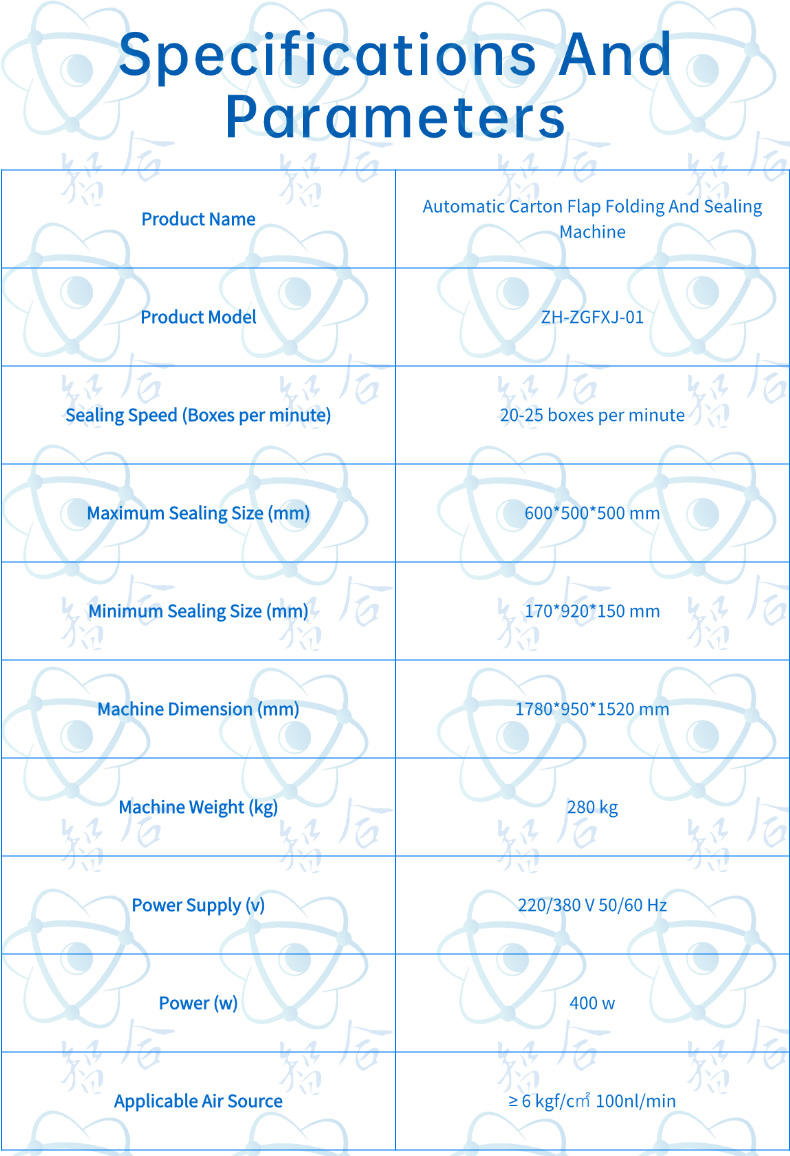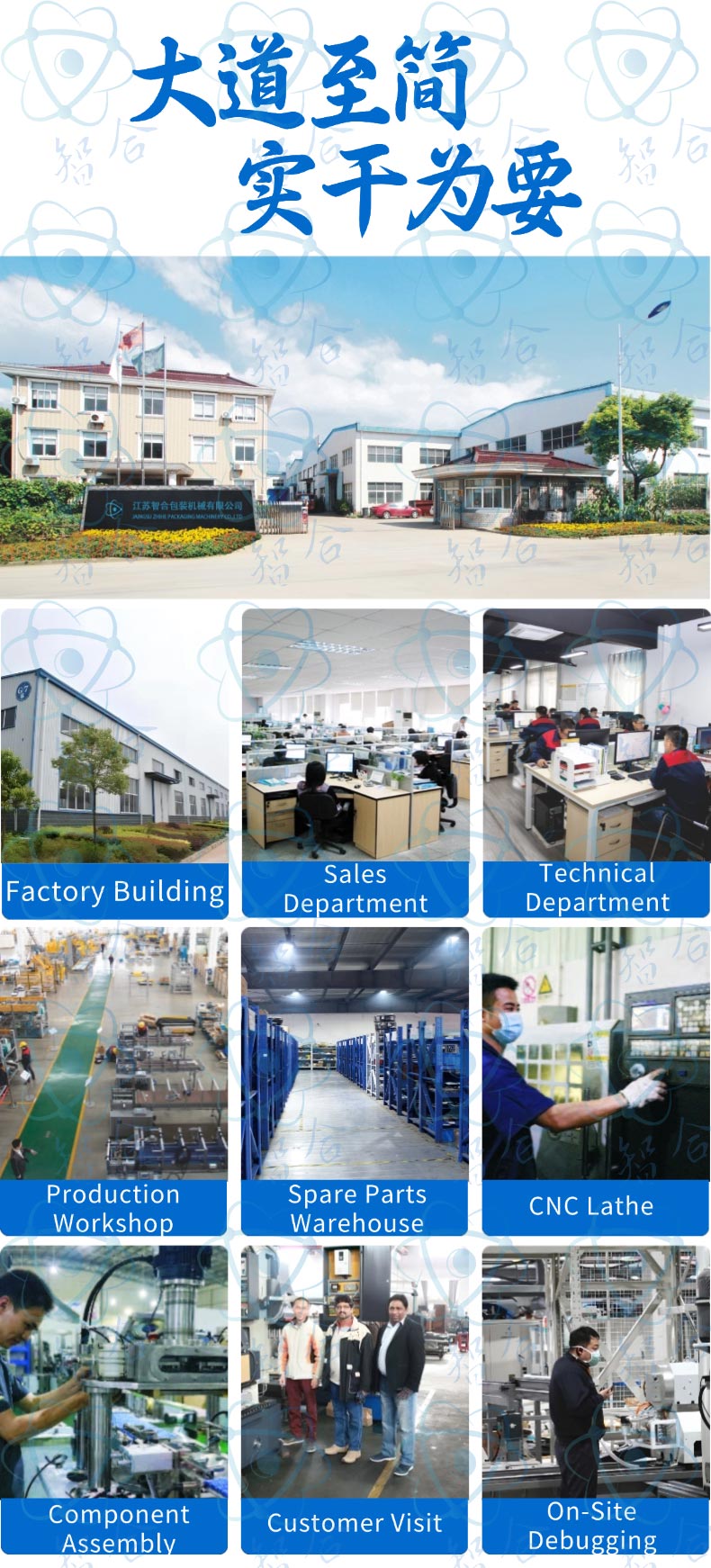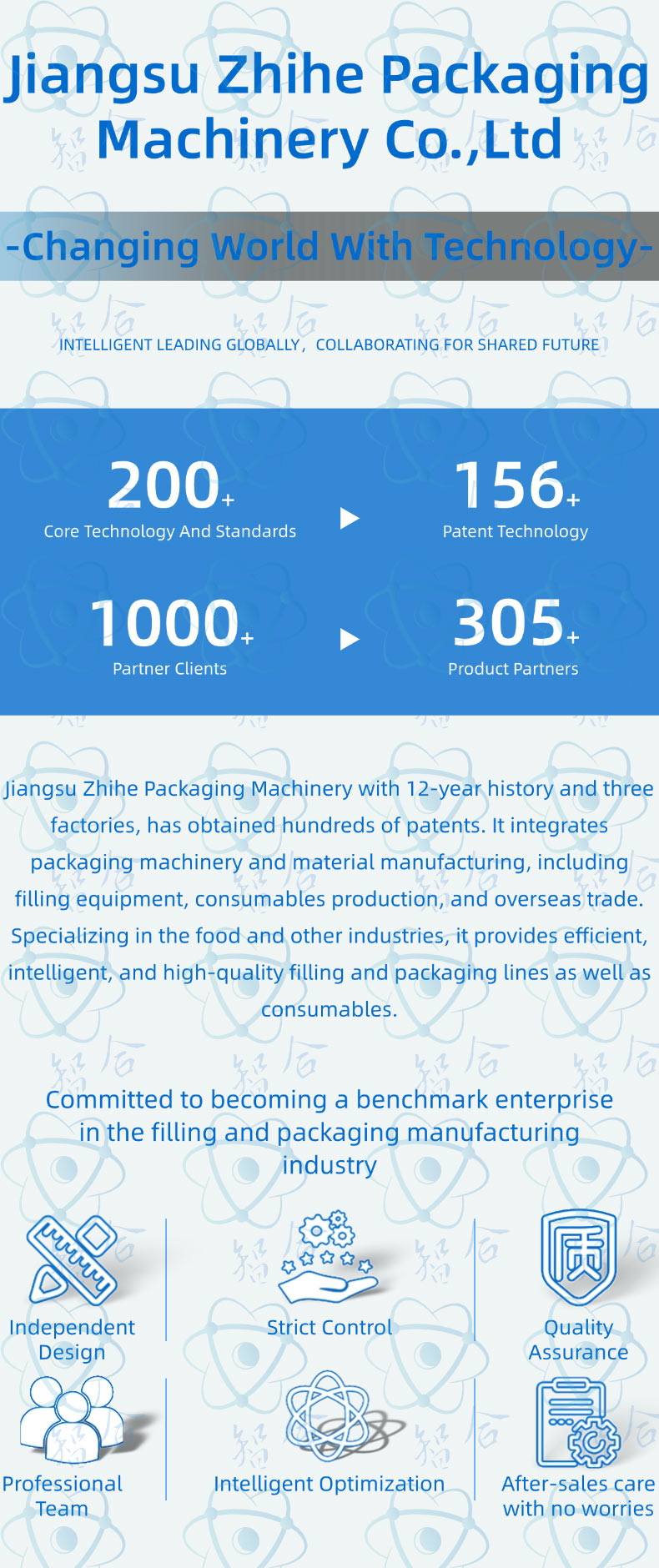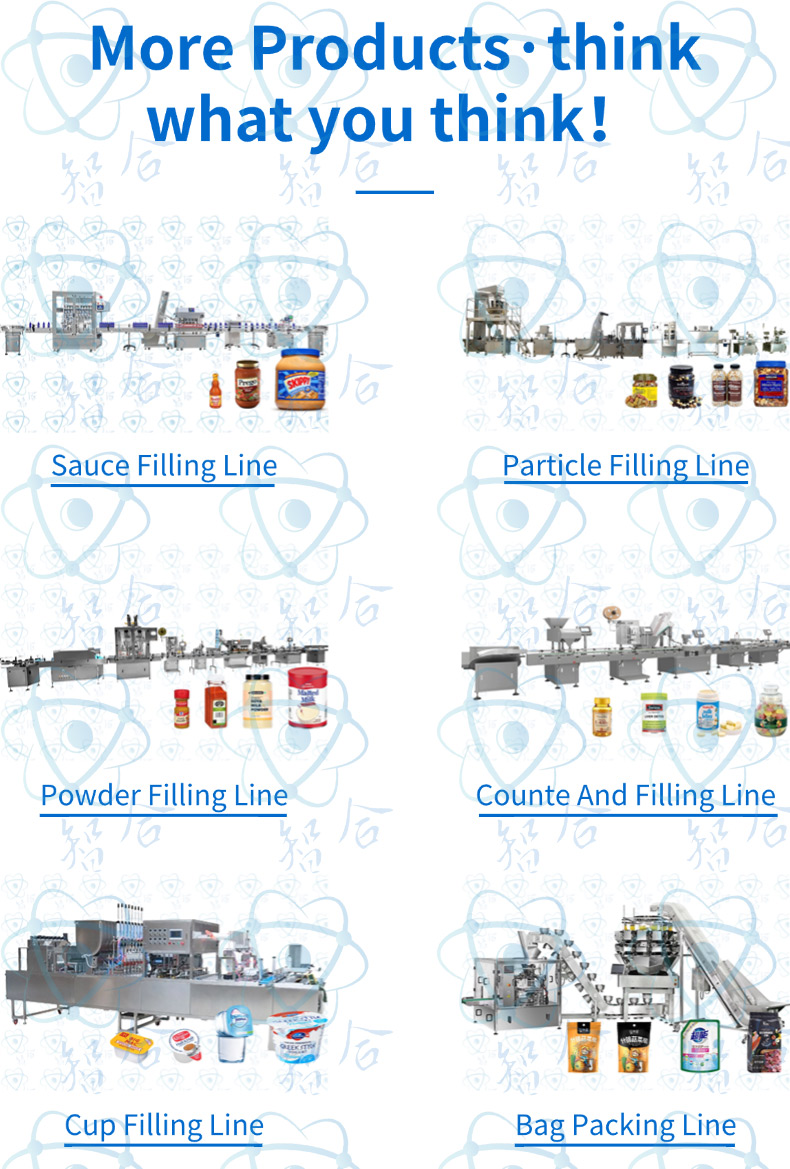




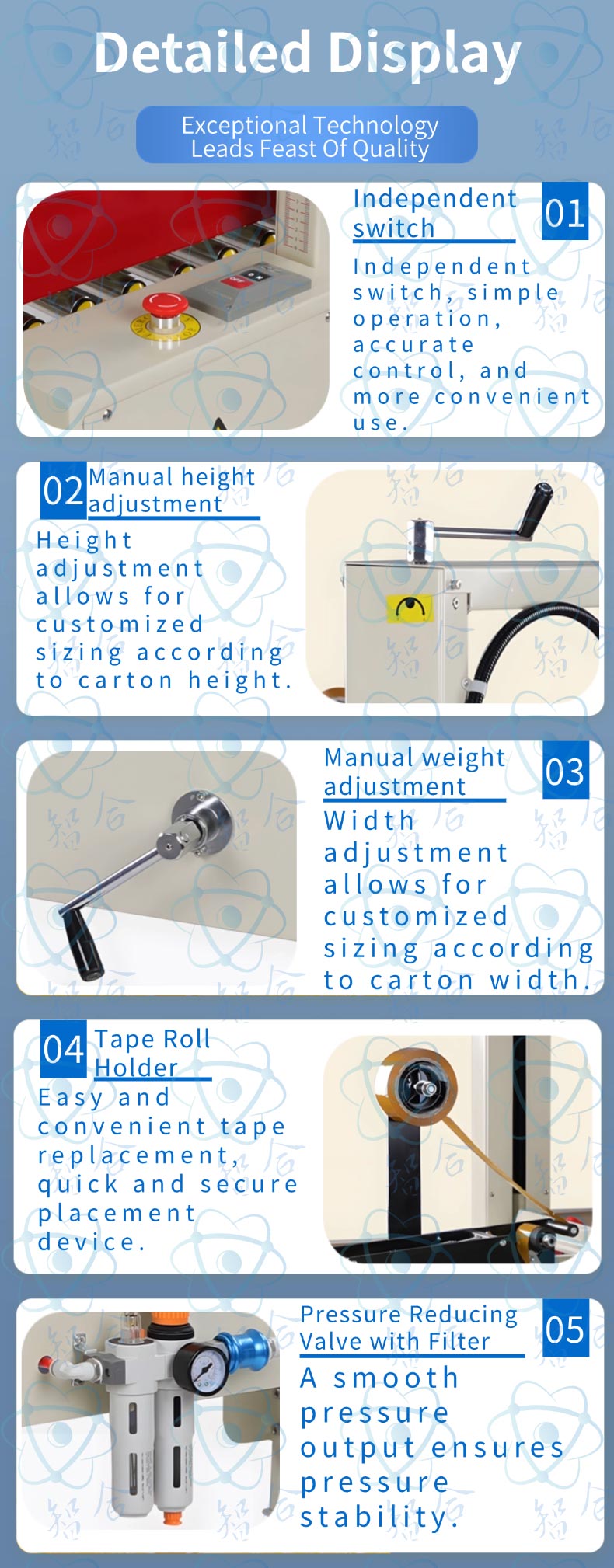 Fully Automatic Flap Folding Carton Sealing Machine:
Fully Automatic Flap Folding Carton Sealing Machine:
Overview of Fully Automatic Flap Folding Carton Sealing Machine:
The fully automatic flap folding carton sealing machine is an automated packaging equipment integrating mechanical, electrical, and pneumatic controls, specifically designed for standard carton flap folding and sealing operations. Its core function is to automatically fold the top and side flaps of cartons, apply tape for sealing, and convey and output them, all achieved through high-precision sensors and actuators. It is suitable for high-volume, multi-specification industrial packaging scenarios, significantly improving efficiency and reducing labor costs.
Machine Structure and Components
A fully automatic flap folding carton sealing machine typically consists of the following main parts:
Machine Frame Section:
Material: Constructed using high-strength stainless steel, precision welded and machined to ensure the machine’s stability and durability.
Function: Serves as the machine’s skeleton, supporting and fixing various components to guarantee stable machine operation.
Details: The frame design takes into account vibration absorption, strength, and ease of maintenance and cleaning.
Carton Conveying System:
Types: Common conveying methods include roller conveyors, belt conveyors, or chain conveyors.
Function: Responsible for smoothly and continuously conveying cartons to each workstation and controlling the carton’s movement speed and direction.
Components: May include motor-driven conveyor belts or rollers, guide rails, side baffles, carton positioning devices, etc.
Technical Details: Conveying speed is adjustable to match the overall speed of the production line; the conveying surface material needs to be wear-resistant and non-slip to ensure stable carton conveying.
Carton Flap Folding Mechanism:
Mechanical Structure
Frame and Framework:
Material: Adopts a high-strength carbon steel or aluminum alloy framework with electrostatic powder coating for corrosion protection. Compressive strength ≥200MPa, ensuring high overall machine stability.
Adjustment Mechanism: Equipped with electric or manual adjustment screws, supporting three-dimensional dynamic adjustments for width, height, and length to adapt to various carton sizes.
Conveying System:
Transmission Method: Employs dual-chain synchronous drive or variable frequency speed-regulating roller conveyor line. Conveying speed is adjustable from 0–25m/min, supporting stepless speed variation.
Guiding Device: Double-sided adjustable guide rods, equipped with photoelectric sensors to monitor carton position deviation in real-time, with an accuracy of ±0.5mm.
Material: Wear-resistant polyurethane conveyor belt or 304 stainless steel rollers, with a wear-resistant lifespan ≥100,000 hours.
Flap Folding Mechanism:
Flap Folding Method: Step-by-step folding (short side flaps folded first, then long side flaps), using servo motor-driven robotic arms or pneumatic push rods for execution.
Short Side Flap Folding: Upper and lower cylinders linked action, pressure range 0.4–0.8MPa, flap folding angle accuracy ±1°.
Long Side Flap Folding: Rotary folding mechanism, equipped with elastic pressure plates to ensure the flaps fit closely, adjustable crease depth (3–10mm).
Adjustment Module: Position feedback via encoders, supporting one-key switching between different carton types (such as lid-and-base boxes, tuck-in bottom boxes).
Tape Sealing Mechanism:
Tape Spool Holder: Dual-station tape spool design, supporting automatic switching to reduce downtime.
Tension Control: Adopts magnetic powder brakes or spring pre-tensioning devices, tension fluctuation ≤5%.
Tape Applying Mechanism:
Tape Cutting: Pneumatic blades or rotary cutters, cutting time ≤0.1 seconds, with clean, burr-free cuts.
Pressure Device: Silicone rubber pressure wheel sets, adjustable pressure 0.2–0.6MPa, ensuring complete adhesion of the tape to the carton body.
Sealing Modes: Supports single “I” shape, “H” shape, and double-sided sealing. Tape length error ±2mm.
Control System:
PLC (Programmable Logic Controller): Serves as the core control unit of the machine, responsible for receiving sensor signals, executing preset programs, and controlling the actions of various actuators to achieve automated machine operation.
HMI (Human-Machine Interface/Touch Screen): Used by operators to set machine parameters, monitor machine operating status, and perform fault diagnosis and maintenance. Typically uses touch screen operation, with a user-friendly and intuitive interface.
Sensors: Distributed at key positions throughout the machine to detect carton position, status, and machine operating status, feeding signals back to the PLC to achieve closed-loop control. Common sensors include photoelectric sensors, proximity sensors, encoders, etc.
Actuators: Including motors, cylinders, solenoid valves, etc., which execute corresponding actions based on PLC commands to drive components like conveyor belts, folding arms, and tape heads to work.
Safety Protection Devices: Such as safety light curtains, emergency stop buttons, overload protection, etc., are used to ensure the safety of operators and equipment.
Technical Details: The control system needs to be stable and reliable, have fast response times, and strong anti-interference capabilities. Some advanced control systems also have remote monitoring, fault diagnosis, and data statistics functions.
Pneumatic System:
Air Source: Typically requires an external air source (compressed air) to provide power to the machine’s pneumatic components.
Pneumatic Components: Including cylinders, solenoid valves, pneumatic motors, air pipes, air connectors, air source treatment components (such as filters, pressure regulators, lubricators), etc.
Function: Utilizes compressed air to drive cylinders and other actuators to achieve actions such as flap folding, pushing, and pressing. Pneumatic systems have the advantages of fast action speed, high force, and simple structure.
Technical Details: The design of the pneumatic system needs to ensure the air source is clean and stable, and that pneumatic components are reliable and durable. Regular inspection and maintenance of the pneumatic system are required to prevent air leaks or component failures.
Electrical System:
Power Supply: Typically three-phase or single-phase AC power, voltage and frequency should comply with local standards.
Distribution Cabinet: Centrally installs and protects electrical components such as circuit breakers, contactors, relays, inverters, PLCs, etc.
Cables and Wiring Harnesses: Responsible for connecting various electrical components, transmitting power and signals.
Motors: Drive conveyor belts, folding mechanisms, and other moving parts.
Lighting System: Provides illumination inside the machine for easy operation and maintenance.
Technical Details: The design of the electrical system needs to comply with electrical safety standards and have overload protection, short circuit protection, leakage protection, and other functions. The layout of cables and wiring harnesses needs to be neat and standardized to avoid interference and wear.
Working Principle and Operation Flow
1.Carton Input and Positioning:
Cartons enter the equipment via the conveyor line. Photoelectric sensors are triggered, and the PLC controls guide rods to adjust the width to the carton size.
Limit baffles rise, and cartons are precisely parked at the flap folding station, with a position deviation ≤1mm.
2.Flap Folding Execution:
Short Side Folding: Upper and lower cylinders act simultaneously, folding short side flaps inwards to 90°, with pressure plates pressing them firmly.
Long Side Folding: The rotary folding mechanism is activated, and long side flaps are folded along a preset trajectory. Pressure wheel sets apply constant pressure to ensure crease flatness.
3.Tape Sealing:
Tape is guided by guide rollers to the tape applicator. A vacuum adsorption device attaches the leading edge of the tape to the carton body.
As the carton moves forward, the tape is evenly pressed and adhered by pressure wheels. After the tail is cut, it automatically re-sticks, forming an “H” or “I” shaped seal.
4.Output and Detection:
Sealed cartons are sent out via the output conveyor belt. Some models are equipped with weighing sensors (accuracy ±10g) or visual inspection systems (detecting tape adhesion).
Operation Flow Summary: Carton Placement -> Conveying -> Top Flap Folding -> (Optional Reinforced Bottom Flap Folding) -> Tape Sealing -> Output.
Advantages and Features of the Machine
High Degree of Automation: Achieves automatic carton flap folding and sealing, greatly reducing manual operation and improving production efficiency.
Stable and Reliable Sealing Quality: Mechanized operation ensures the uniformity and firmness of sealing, reducing quality fluctuations caused by human factors.
Labor Cost Savings: One fully automatic flap folding carton sealing machine can replace multiple manual workers, significantly reducing labor costs.
Improved Packaging Efficiency: Fast sealing speed, capable of meeting the needs of large-volume production and improving overall packaging efficiency.
Simple and Convenient Operation: User-friendly human-machine interface, parameter settings, and operation are simple and easy to learn.
Convenient Maintenance: Reasonable structural design, daily maintenance is relatively simple.
Wide Range of Applications: Can be applied to various sizes and types of cartons, with a wide range of application industries.
Strong Integration Capability: Easily integrated with upstream and downstream packaging equipment (such as carton erectors, case packers, palletizers) to form an automated packaging production line.
Application Industries
Fully automatic flap folding carton sealing machines are widely used in various industries, especially suitable for production lines requiring large-volume carton packaging, such as:
Food and Beverage Industry: Carton packaging for products such as beverages, beer, milk, snacks, convenience foods, condiments, etc.
Pharmaceutical and Health Products Industry: Carton packaging for products such as pharmaceuticals, health products, medical devices, etc.
Daily Chemical and Detergent Industry: Carton packaging for products such as shampoos, body washes, laundry detergents, cosmetics, etc.
Electronics and Electrical Appliances Industry: Carton packaging for products such as home appliances, computers, mobile phones, components, etc.
E-commerce and Logistics Industry: Carton packaging for e-commerce platform goods, warehouse logistics goods, etc.
Printing and Packaging Industry: Carton packaging for products such as printed materials, paper products, packaging materials, etc.
Other Manufacturing Industries: Carton packaging for products such as hardware tools, mechanical parts, furniture, building materials, etc.